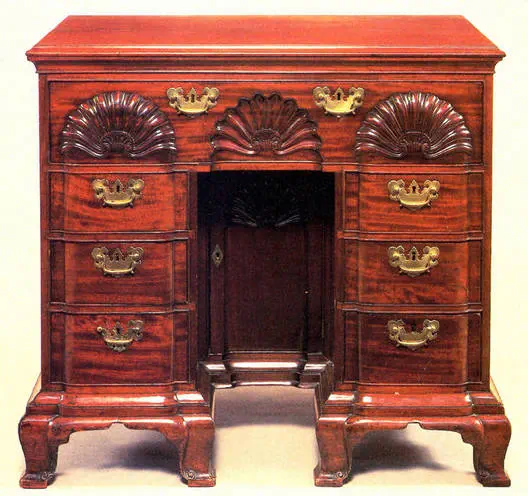The Nature Of Wood
The virtues of wood as a building material are legendary.
It’s
attractive, abundant, and easy to work. Pound for pound,
it’s
stronger than steel. If properly cared for, it will last
indefinitely. And you can use it to make almost anything,
from a
tiny box to a huge building.
It’s also a complex (and often perplexing) material. Unlike
metals
and plastics, whose properties are fairly consistent
throughout,
wood is wholly inconsistent. It’s stronger along the grain
than
across it. It expands and contracts more in one direction
than
another. Its color, weight, and grain pattern vary not only
from
species to species but from board to board.
To work with wood — and have it work for you — first learn
its
complex nature. In particular, you must understand three
unique
properties that affect everything you build. These are
grain, movement, and
strength.

The Goddard-Townsend Blockfront Desk (circa 1740) is
one of
the finest examples of early American craftsmanship.
"Blockfront" furniture was the first uniquely American
furniture design in the Eastern Tradition. This piece
shows
an elegant variation on the style – a "reverse"
blockfront
inside the kneehole.
- SPECS: 33-1/2" high, 37-1/2"
wide, 20"
deep
- MATERIALS: Honduras Mahogany,
Hard
Maple
- CRAFTSMAN: Edmund Townsend,
Newport,
RI

Back to Top



